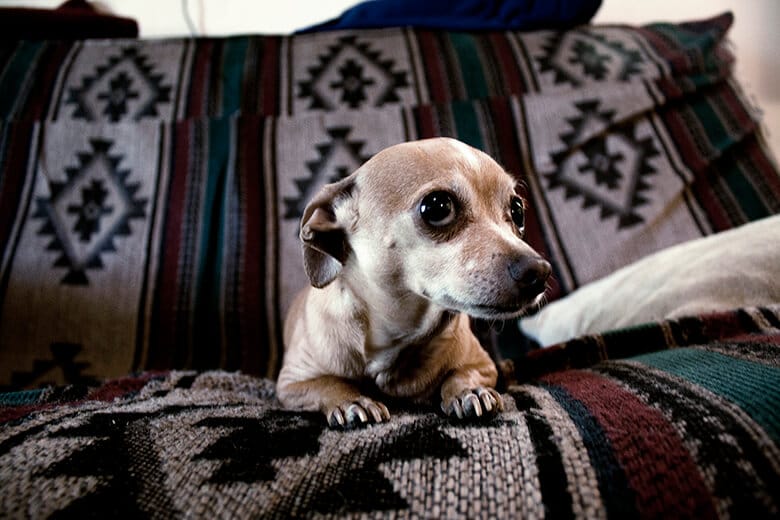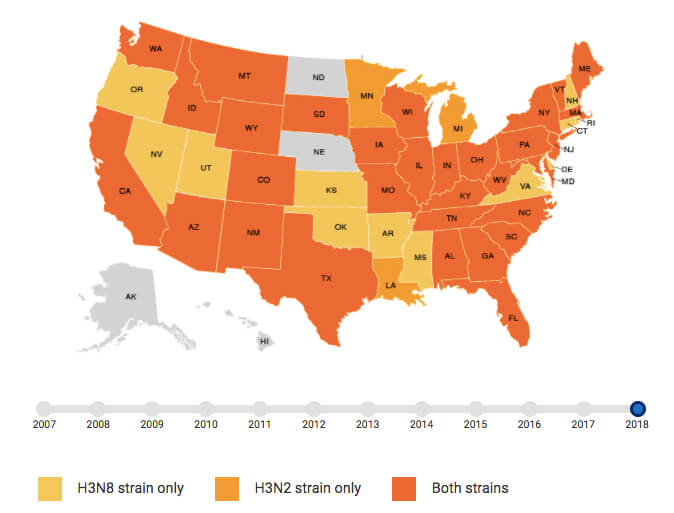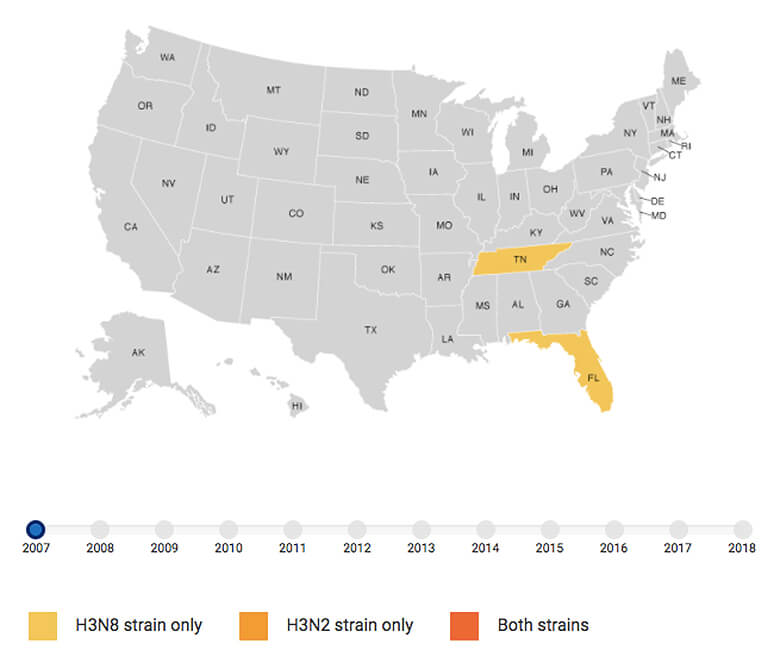Dogs can get the flu, too. And just like human influenza, it’s highly contagious.
According to the American Veterinary Medical Foundation, the canine flu has two different strains: H3N8 and H3N2. In 2004, canine H3N8 influenza was identified in Florida in greyhounds. This strain has been the culprit in sick dogs in most states across the country. Canine H3N2 influenza was first identified in 2015 when an outbreak of the strain was detected in dogs in Chicago. Previously, H3N2 was only found in in South Korea, China and Thailand.
Related: The First Command You Should Teach Your Dog to Build a Lasting Bond
The spread of this season’s canine flu outbreak is charted on the below map. As you can see, it’s everywhere with the exception (so far) of North Dakota and Nebraska.
Compared to 2007, you can see why dog owners should be concerned.
Transmission and Symptoms
Canine flu is spread from infected dogs by doing the things that dogs naturally do: barking; interacting with other pups; sneezing; coming in contact with contaminated surfaces like toys, bowls, and leashes; and being around people who are in contact with infected dogs.
Symptoms include:
- Persistent Cough
- Thick nasal discharge
- Fever (from 104° to 105°)
- Lethargy
- Eye discharge
- Loss of appetite
According to the CDC, the severity of the flu can range from a mild illness with no symptoms to pneumonia and death, though very few dogs die from the flu (less than 10 percent, according to the AVMA).
It may take as long as two to three weeks to recover, but if your dog develops a secondary infection, it could lead to pneumonia. If your dog has any of these symptoms, take him immediately to your veterinarian.
Related: Baby, It’s Cold Outside: How to Keep Your Dog Safe From the Deadliest Winter Dangers
When is your dog contagious?
Like many human diseases, canine flu is most contagious when the virus is incubating, usually a two- to four-day period when your dog shows no symptoms. That explains how it has spread so widely. Virtually all dogs exposed to the canine flu will become infected.
The AVMA recommends isolating your dog for at least 21 days if he’s been diagnosed with the H3N2 strain. If he’s been diagnosed with the H3N8 strain, the isolation period is for at least 7 days.
Protecting your dog from the flu
If you take your dog to dog parks, boarding or day care, there is an increased risk for infection. While you may not want to deprive your pup of doggie playtime, you can get him vaccinated. The vaccination partially protects against both strains of flu.
Of course, like any vaccine, there’s lots of controversy. The canine influenza vaccination does not necessarily prevent your dog from getting the flu. Some doctors believe it can harm your dog’s immune system and make them sick. And there is a risk of side effects, such as fatigue, fever and vomiting.
On the other hand, the vaccine can reduce the severity and length of the illness. If your dog is around a lot of other dogs often, vaccination may be worth considering. Talk to your veterinarian and do your research to make an informed decision about vaccinating against the flu.
Other more natural ways to protect your dog include:
- Keep them away from other dogs during the flu season
- Wash your hands after touching other dogs
- Change your clothes after contact with other dogs
- Disinfect any hard surface that another dog has had contact with including toys and bowls
- Wait outside the veterinarian’s waiting room (in the street or a car) until your dog is called
- Take your dog to your vet immediately if you notice any symptoms
Treating a dog with the flu
The first thing to do is this: Don’t go crazy! Very few dogs die from the flu.
Treat your dog like you would treat yourself. Make sure he gets plenty of rest in a quiet space and drinks a lot of water.
Feed him high quality, healthy food and treats to tempt him to eat. If a lack of appetite persists, you can give your dog a high calorie nutritious supplement like Nutri-Cal, or your vet may prescribe something.
Keep his eyes and nose clean using cotton balls and warm water. If he’s lying around a lot, provide him with extra padding or an orthopedic bed. Keep him cozy — not too warm and not too cold.
Your vet may give your pup a course of antibiotics to prevent secondary infection. If he isn’t drinking, your vet may also recommend some intravenous fluid therapy. You can easily administer subcutaneous fluids at home if necessary.
It can take several weeks for your dog to recover completely. Monitor his improvement. If a week goes by without any progress, or if he appears to get worse, take him back to your veterinarian.
Related: The 5 Best Water Purifiers to Protect Your Dog From Toxic Chemicals Coming From Your Faucets




















